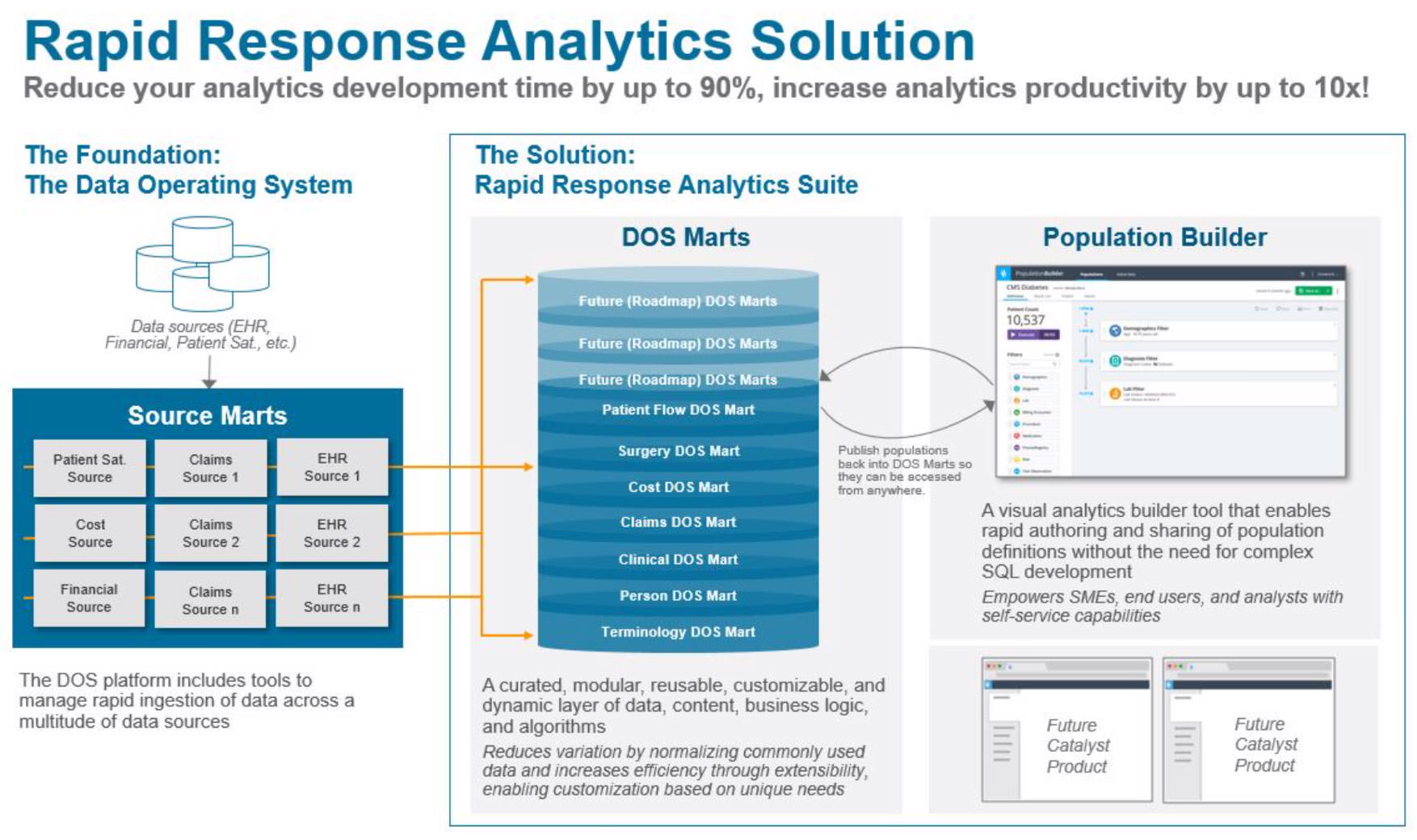Data is increasingly critical to the delivery of healthcare. However, due to its complexity and scope, frontline clinicians and other end users can’t always access the data they need when they need it. In addition, expectations for data at the point of care unduly burden data analysts, keeping them from advancing more sophisticated organizational analytics goals.
In response to data productivity and efficiency challenges, self-service data solutions models only the high-value data, versus all available data, giving analysts and nontechnical users immediate and direct access to the data. These reusable models address three key challenges healthcare analytics programs face:
1. Cost—avoid additional expense and labor of producing single-use models.
2. Efficiency—save times associated with routinely producing new models.
3. Maintenance—allow updates across the organization’s models, versus separate updates.
 Download
Download

Healthcare leaders commonly refer to data as the industry’s most valuable asset, yet stakeholders struggle to efficiently access and leverage this critical resource. Health data is often so vast and challenging to manage that data scientists may spend as much as 80 percent of their workday cleaning up and preparing data before analysts can apply it to generate meaningful insights.
Inefficient access to and ineffective management of data negatively impacts team members who steward and use the data, as well as organizations overall:
The most effective answer for data productivity and efficiency is a solution that models only the high-value data, versus all available data, giving analysts and nontechnical users (e.g., frontline clinicians and executives) immediate and direct access to the data. With such a self-service solution, users can then access the data they need when they need it. Self-service access thus frees data scientists from more basic tasks (e.g., preparing data for analysts), allowing them to address more sophisticated data needs. For example, by shifting to self-service analytics, an integrated multidisciplinary group practice was able to reduce its analytics queue by 27 percent, enabling analytics teams to focus on higher-value tasks.
A self-service analytics solution boosts analytics efficiency by taking the most commonly used data subsets and modeling only on those. In contrast, conventional approaches and national standards to developing data models (e.g., an enterprise data model approach) cover all of an organization’s data, thereby taking up time and resources. A self-service solution yields an easy-to-understand model that’s a good starting point for nontechnical users.
An example of a self-service analytics solution, the Health Catalyst® Self-Service Analytics Solution™ (Figure 1), consists of several components, including:

A self-service analytics solution addresses the critical challenges health systems face in their analytics programs:
By addressing the above challenges, self-service analytics builds partnerships between an organization’s nontechnical users and its IT department. The nontechnical users gain access to analytics and become more active participants in data gathering and report building and can quickly get answers to straightforward questions. Data engineers remain a critical part of the analytics workflow, helping users engage IT for more complex issues.
Common data models serve similarly to a foundation for a manufactured home, laying the stability and essentials (e.g., concrete supports and plumbing) and still allowing customers to add their own customized features (e.g., paint colors and countertops)—through the use of controlled data model extensions. Customers can begin exploring their data through the use of a population identification tool quickly while permitting customer-specific needs to be accounted for in the short and long-term. This set up also creates a less expensive process by applying individual goals to a standard model, rather than building each time from the ground up.
In the Self-Service Analytics example, the foundation is the DOS Marts, which are inspired by industry standards such as HL7® FHIR® whenever possible. The Population Builder tool sits on top of the DOS Marts and rapidly identifies patients best suited for population health programs through predefined filters and customizable extensions. Leading Wisely dashboards can be built on top of DOS Mart content, custom datasets collected through IDEA, or additional content found within DOS.
Health systems are using self-service analytics solutions to enable quick, accurate patient identification to better understand which patients can benefit from intervention and support. For example, with 30 million Americans with diabetes and one-third of American adults with hypertension, the Queen’s Health Systems (QHS) sought to implement custom algorithms developed by the Hawaii Department of Health (DOH) to better identify patients with undiagnosed pre-diabetes, diabetes, and hypertension, as well as patients with past-due diabetes/pre-diabetes screenings.
Although QHS staff was capable of building and implementing the algorithms, staffing constraints, and disparate EMRs created delays and challenges. QHS needed to dramatically accelerate the process of securing a DOH grant for improving the management of patients with diabetes and hypertension.
To meet these challenges, QHS adopted a self-service analytics solution, enabling the accelerated implementation of the custom algorithms. After successfully implementing the algorithms, QHS was able to identify key populations:
Also, with the self-service-generated algorithms, QHS identified the patients in the above population, generated a patient list in real time, and established its first true population health registry based on timely, meaningful clinical data.
As healthcare leaders increasingly embrace data as a top asset, the industry needs better ways to manage and access this essential resource and see an ROI from their digital investments. By adopting a self-service solution that gives timely access to the most high-value data, organizations will see the real benefits of truly data-driven operations, as frontline users will get the answers they need when they need them. Analytics teams can focus on complex strategic objectives.
Would you like to learn more about this topic? Here are some articles we suggest:
Would you like to use or share these concepts? Download the presentation highlighting the key main points.
Click Here to Download the Slides
https://www.slideshare.net/slideshow/embed_code/key/a8gRmQs3GIgCwf